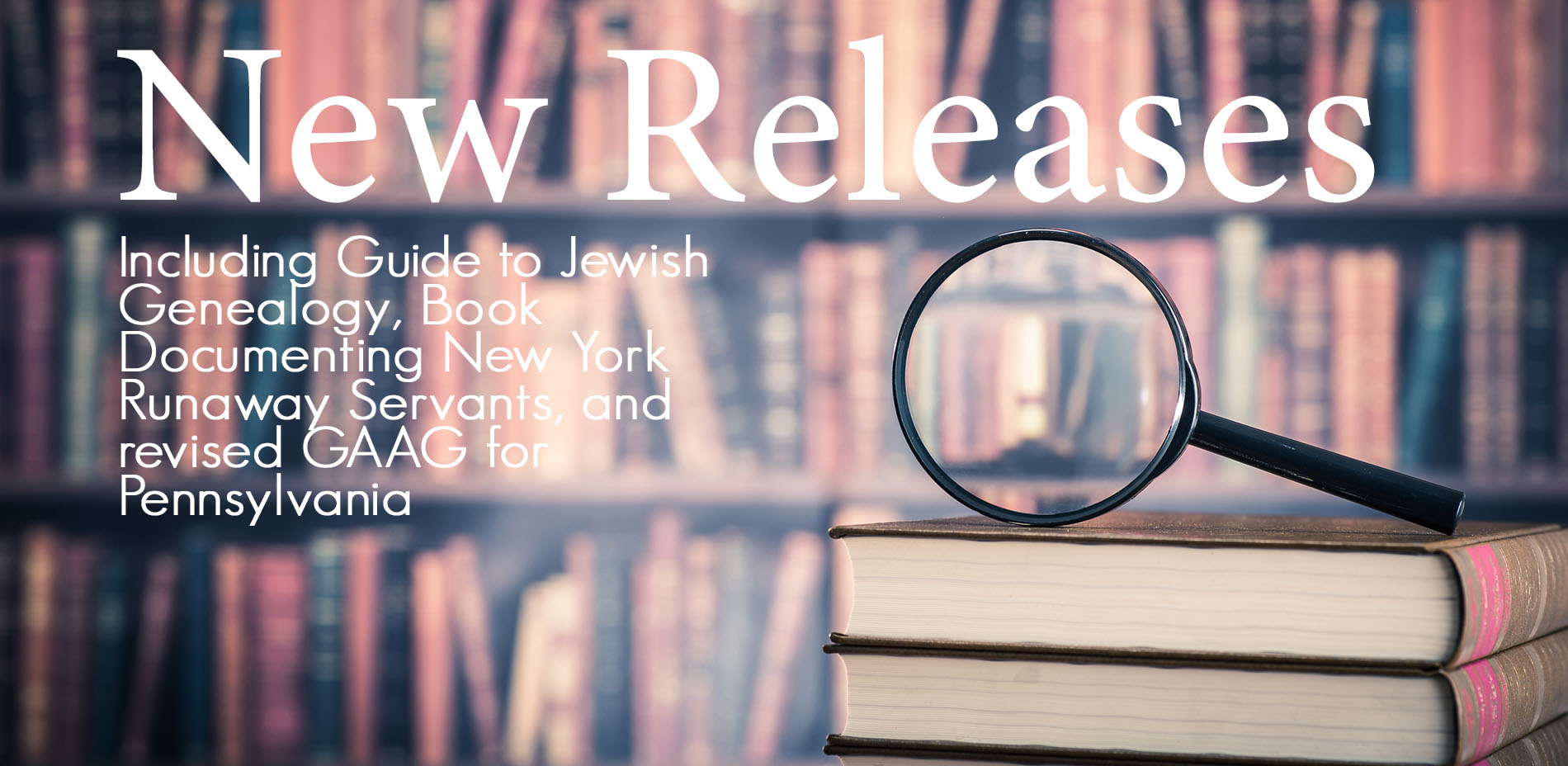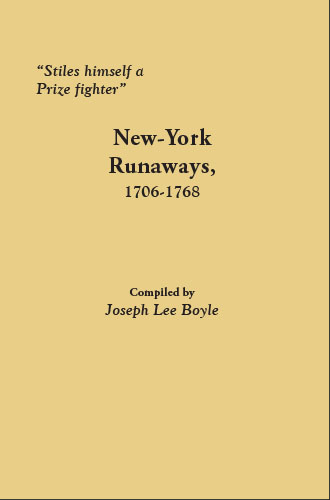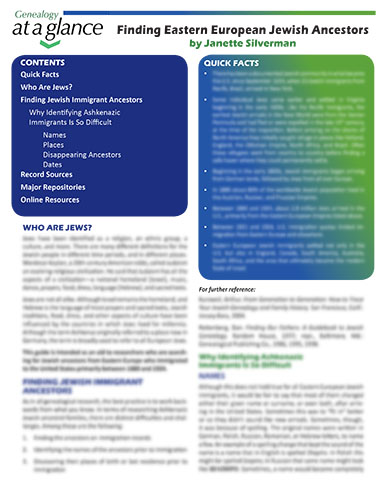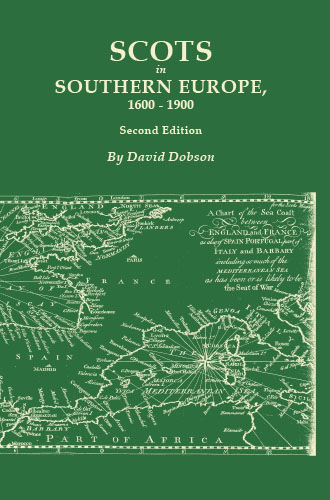
Although the term Ashkenaz originally referred to a place now in Germany, it is broadly used these days to refer to all European Jews. This guide is intended as an aid to researchers who are searching for Ashkenazic Jewish ancestors from Eastern Europe who immigrated to the United States primarily between 1880 and 1924. In the newest installment in our series of laminated research aids, “Genealogy at a Glance,” professional genealogist Janette Silverman tackles the various difficulties you’ll face when researching your Ashkenazic Jewish ancestors and then offers concrete advice on how to overcome these difficulties. In just four, laminated pages, you’ll find everything you need to know to get your research started—the most helpful databases and reference works, as well as the major record sources, repositories, and online resources. Identifying Ashkenazic immigrants is challenging, but with this Genealogy at a Glance guide at your side, the task will become much easier. [Researchers with Sephardic Jewish ancestry (North Africa and the Iberian Peninsula) should note that we expect to produce such a “Genealogy at a Glance” in the future.] VIEW GUIDE DETAILS
Speaking of “Genealogy at a Glance,” we are able to report that we now have a new edition of our Pennsylvania Genealogy Research installment. Originally written in 2012 by the late John T. Humphrey, an award-winning author and renowned genealogist specializing in Pennsylvania and German research, Genealogy at a Glance: Pennsylvania Genealogy Research provides a comprehensive overview of the topics essential to Pennsylvania genealogy, from settlement background and record sources to Internet sites and libraries. The Updated Edition contains Humphrey’s original rich and detailed text but with updated URLs and source citations, and the addition of some online indexes and databases that became available after this work was originally published. For Pennsylvania genealogy, these may be the best four pages you’ll ever use. VIEW GUIDE DETAILS
Dr. David Dobson’s latest book is SCOTS IN SOUTHERN EUROPE, 1600-1900: Spain, Portugal, Italy, Madeira, and the islands of the Mediterranean and Atlantic. Second expanded edition. The countries of southern Europe attracted relatively few Scots in the early modern period; however, the failure of the Jacobite Risings in 1715 and 1745 resulted in a number of Jacobites, mainly Roman Catholics and Episcopalians, taking refuge in locations within Catholic Europe, especially Italy where the Court of King James Stuart was based. By the eighteenth century, aristocratic families were sending their sons on the Grand Tour of Europe, especially to Italy and Greece; subsequently artists and scholars settled there, some permanently others temporarily. This volume is an expanded and revised version of a book published in 2013 and contains much new data mainly derived from original research in the Regional Archives of Madeira in Funchal. VIEW BOOK DETAILS

Last, but certainly not least, the indefatigable Joseph Lee Boyle who has produced multiple collections of colonial newspaper “want ads” seeking the whereabouts of runaway indentured servants has now compiled a new volume on New York runaways. Under a title reminiscent of one of those ads, “Stiles himself a Prize fighter.” NEW YORK RUNAWAYS, 1706-1768, Mr. Boyle assembled this list of New York runaways for the period 1706-1768 from The New-York Gazette, The New-York Weekly Journal, The New-York Chronicle, and 27 other papers published from New England south through Maryland. Among those are the Boston Gazette, The Connecticut Gazette, The Maryland Gazette, and The American Weekly Mercury. Although we will never know precisely how many New York indentured servants and other runaways fled their masters—the first New York newspaper did not commence until 1726–Mr. Boyle has nonetheless rescued from obscurity upwards of 1,500 ads for missing persons, referencing more than 3,000 persons with New York connections. VIEW BOOK DETAILS






